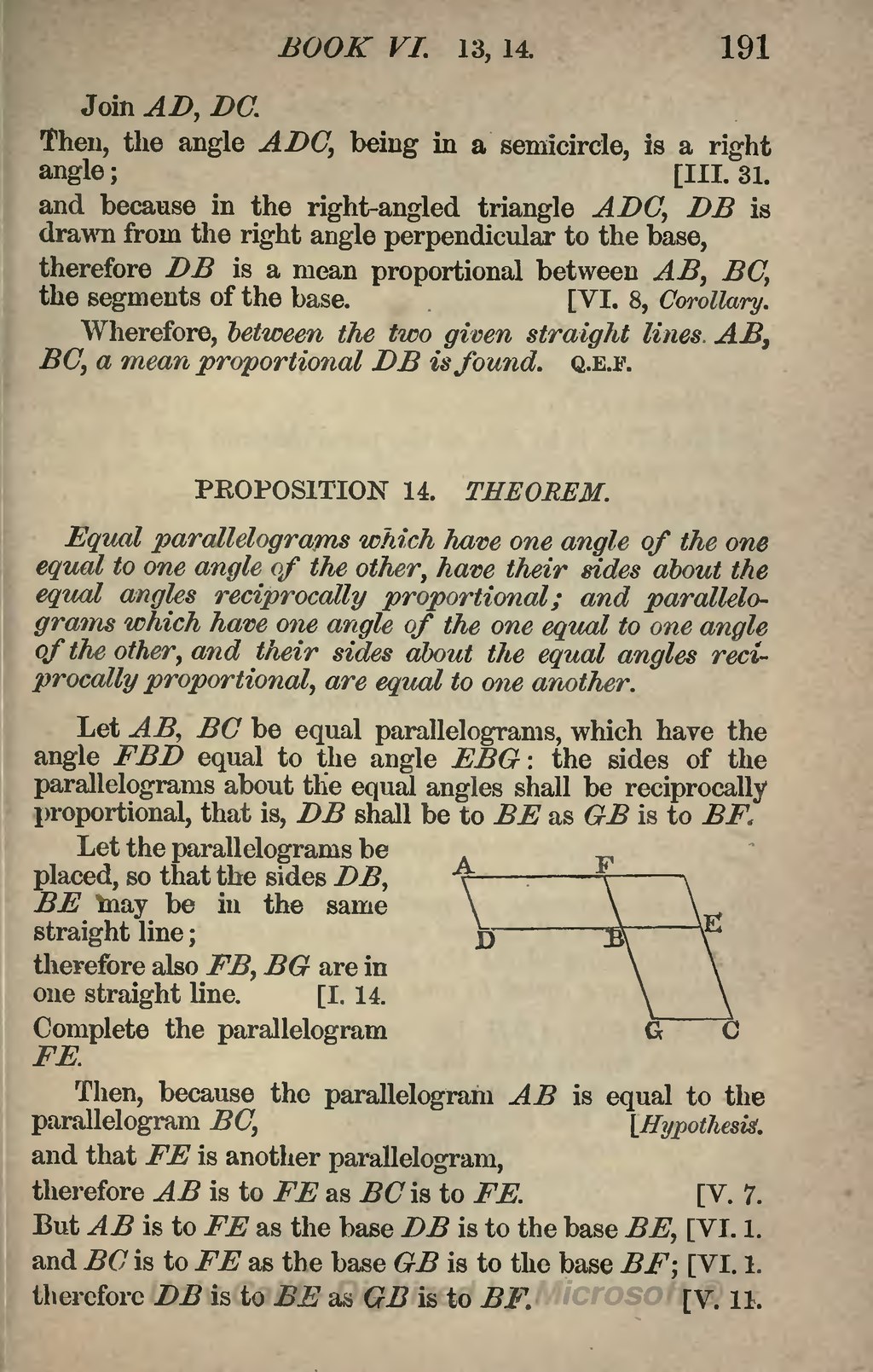Join AD, DC.
Then, the angle ADC, being in a semicircle, is a right angle; [III. 31.
and because in the right-angled triangle ADC, DB is drawn from the right angle perpendicular to the base,
therefore DB is a mean proportional between AB, BC, the segments of the base. [VI. 8, Corollary.
Wherefore, between the two given straight lines. AB, BC, a mean proportional DB is found, q.e.f.
PROPOSITION 14. THEOREM.
Equal parallelograms which have one angle of the one equal to one angle of the other, have their sides about the equal angles reciprocally proportional; and parallelograms which have one angle of the one equal to one angle of the other, and their sides about the equal angles reciprocally proportional, are equal to one another.
 Let AB, BC be equal parallelograms, which have the angle FBD equal to the angle EBG: the sides of the parallelograms about the equal angles shall be reciprocally proportional, that is, DB shall be to BE as GB is to BF.
Let AB, BC be equal parallelograms, which have the angle FBD equal to the angle EBG: the sides of the parallelograms about the equal angles shall be reciprocally proportional, that is, DB shall be to BE as GB is to BF.
Let the parallelograms be placed, so that the sides DB, BE may be in the same straight line;
therefore also FB, BG are in one straight line. [I. 14.
Complete the parallelogram FE.
Then, because the parallelogram AB is equal to the parallelogram BC, [Hypothesis.
and that FE is another parallelogram,
therefore AB is to FE as BC is to FE. [V. 7.
But AB is to FE as the base DB is to the base BE, [VI. 1.
and BC is to FE as the base GB is to the base BF; [VI. 1.
therefore DB is to BE as GB is to BF. [V. 11.
